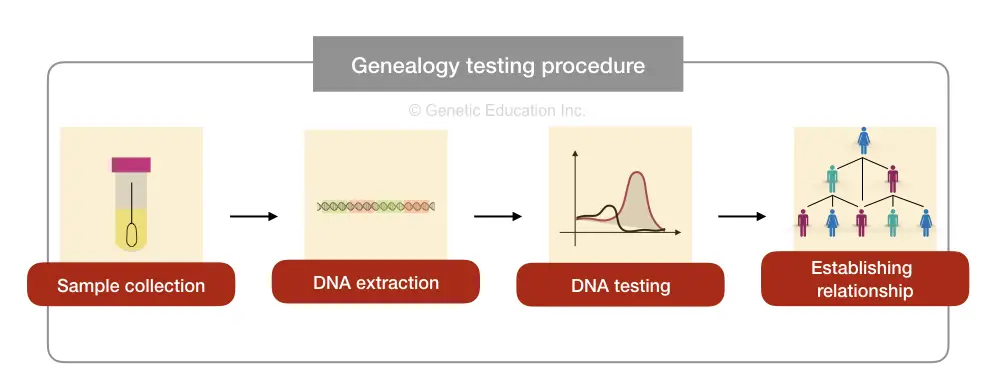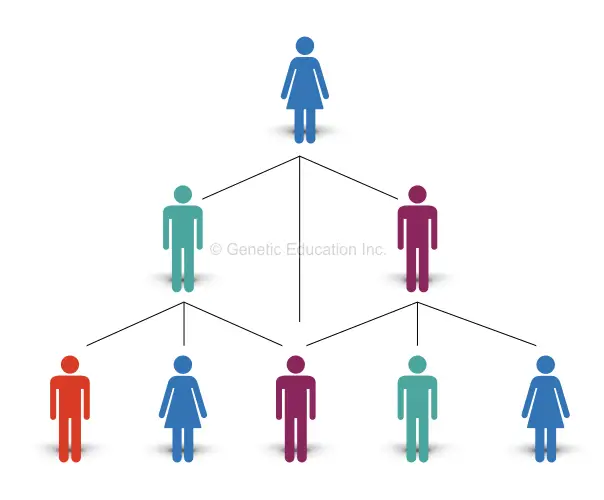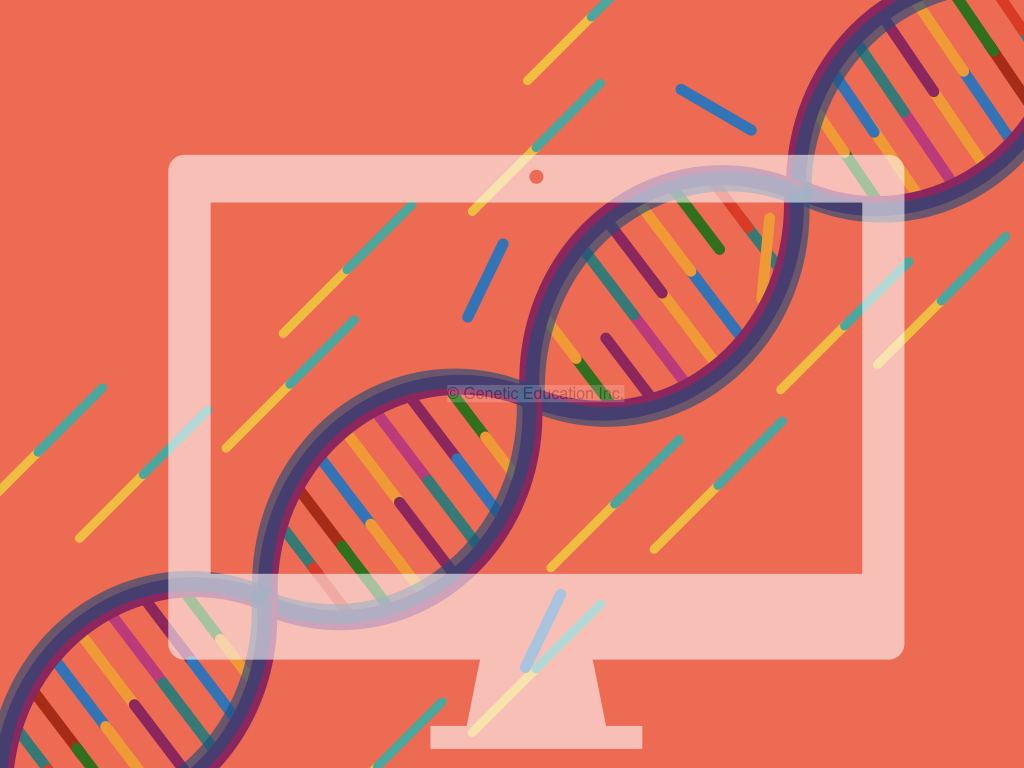“Direct to consumer (DTC) genetic genealogy services are vulnerable to genetic hacking, and someone’s DNA information can be misused”– Coop G and Michael E.
‘Data’ is everything in the 21st century. Either useful, sensitive or garbage data will be a million-dollar business soon in upcoming years. The era is of the internet, people are searching for many things every day, some for fun, some random or some for useful things!. Also, some portals seek personal information while others need professional information.
All these are though in different file formats but are data, waving on the internet every day, from one part of the word to another. Your personal, professional and search information can be used illegally to bully you, selling you protects or influence you- that is hacking.
The illegal use or store of data, a common unhealthy practice in today’s world and of course, as I said, a million-dollar business.
But the question arises here, can DNA data or genome data be hacked?
A person’s genome- made up of billions of nucleotides and chains of DNA, is the data storage unit, a biological database of life and blueprint. The study of a gene, DNA or genome or chromosome is known as genetics.
The genome is a cluster of DNA- deoxyribonucleic acid, makes genes and regulates gene expression.
The information present in the DNA is useful to know a person, to identify organisms and relatives, to identify the disease or variants and many others!
DTC- direct to consumer genetic genealogy services offers tests to find your common ancestors and match you DNA data with them. If a match happens, the person is surely your blood relative- biological.
That data, that all genomic information- DNA data is available on the internet, and much like other data, it can also be hacked!
Yes! Genetic hacking or DNA hacking is a real deal. A thief can steal your DNA information and can use it illegally.
The present piece of article is concentrated on genetic hacking (not biohacking), how it happens and what are the consequences of it. Genetic hacking is a sensitive topic, whose concept can only be understood if the background of the topic will be learned well.
We need to understand the concept of genealogy testing and direct to home testing concept first, in addition, the genetic testing as well.
Key Topics:
Genealogy and genetic testing:
A genetic or genealogy test identifies persons, relatives- biological and makes matches between two organisms or persons. It tests DNA, not all but some specific, conserved and known regions of the genome, we know it as marker regions or loci.
Testing collects the saliva sample, followed by isolating the DNA from cells to examine the common regions, technically the STR- short tandem repeats and VNTRs- long tandem repeats to the genome. Other regions might also be targeted.
They sequence the whole regions or the genome and cluster the marker regions as I said, the STRs and VNTRs and store it. Then they try to match it with the available information, the same test performed on other persons.
If the regions- marker genomic loci, matches with the person, they are considered biologically identical. If not, they are distantly related. The loci should have been matching with the most common ancestries, then only the relationship between persons can be established.
The entire process of genealogical or gene or DNA testing includes three broader practices,
- DNA testing
- Collecting and storing the data
- Processing the genealogical data.

The DNA testing outcomes the information in a computational language and quite impossible to interpret. That might be the amplification results or DNA sequencing result, it depends on which test is performed.
Data is huge up to 32 GBs in case of the next-generation sequencing as are stored in an ‘appropriate’ file format, that is readable to interpret the results.
During data processing, the data is processed against the available loci data of other individuals to establish the relationship among them. All these needs, high end, state of the art and sophisticated instrumentation, geneticists and bioinformatics experts.
Direct to consumer service is often known as home DNA testing, although not entirely done at home. The company sends a sample collection kit, you need to collect a sample to test as prescribed and send it back to the company.
The prospective company processes the sample, collects information and processes it on behalf of you to match it. However, we can also do it, the database is online and accessible to registered persons.
Now here comes the problem, how it can be hacked!
The data is public, though restricted to registered users only, anyone can access it and hence can be misused. The possible causes of hacking are discussed here.
An attacker can grab the information of specific loci or genomic regions. For that, the hacker prepares a fake genomic data, register on an online database and compare it to the available data.
The region whose information they are seeking can be trapped and taken. For instance, if someone wants to get information about the group of people carrying the genotype or allele for breast cancer, they prepare a fake identical genotype for the same and match it.
In another case, the hacker can get the information of relatives by preparing the fake locus of some specific group of people. For example, if someone wants information on how many people belong to a European ethnical group, they simply manipulate the genomic data, compare it and get the list of people and even their address who belongs to a European group.
Hackers can also alter the algorithm of identification, matching of people and generate mismatched or wrong outputs. That happens!
Once data obtained, that data can be used in any means to sensitive matters, blackmailing, selling things or spreading some negative agenda.
A person’s DNA information is so critical, it’s a blueprint of life and hence should not be disclosed without their prior permission. The information taken from genetic hacking can be used anywhere, by anyone and for any cause.
Let us understand it by taking an example.
Suppose some group of scientists (like a Frankenstein one!) is trying to develop some gene therapy against Alzheimer’s disease and they want data, how many people have Alzheimer’s susceptible genotype.
They simply hack the personal DNA testing data, prepare a fake genotype to Alzheimer’s, as I said and check it against the available data online.
They grab the information of people susceptible to Alzheimer’s and convince them, manipulate them to take part in gene therapy experiments illegally. It’s like participating in smuggling. Now you got the point! It can be used enormously.
We must have to discuss here the case of CRISPR babies. The reason is, DNA data or the genomic data of a person is their own biological property and no one can use it without their prior permission, not even experiment on it.
In 2019, Chinese scientists He J and co-workers announced the world’s first gene-edited babies using the technique known as CRISPR-CAS9. It’s a technique in which CAS9 nucleases cleave the DNA at a target location using the information of CRISPR sequences.
They had edited the gene CCR5 to confirm resistance against HIV. Twin babies born after successful IVF. The whole experiment was ethically wrong, first, no organization had given approval for germ-line gene therapy they had conducted and second, the parents were misled, prior permission stating the outcomes of gene therapy was not taken.
Not so common, but scientists sometimes mislead patients henceforth global research organizations are closely monitoring the progress of gene therapy and gene editing experiments.
Genetic hacking is again one of the kinds of crime, we will see in forthcoming years. Biology and computer experts will steal genetic data and sensitive information from patients and manipulate them.
For now, no regulations and SOPs are available to restrict the unauthorized use of direct to use genealogy testing database. Although the biggest concern at least for now is the reconstruction, manipulation and altering of the available genetic data.
Hackers can target the DNA data depository (through the dark web obviously!) and can destroy them or manipulate them. The resultant output that a patient can get after comparison can mislead them, consequently.
This is the first priority for now in the field of genetic genealogy testing but thankfully “can be prevented”, Edge said.
Hacking is illegal if it is employed unethically and so is genetic hacking too. It risks the future of DNA data storing and transmitting, scientists have to think about that as soon as possible.
Why is DNA so important?
Genetic information is so critical and private, as I said, once you have submitted your DNA or genetic information to some portal, it is done. It can’t change, it’s like you have given your own life to someone else by your own hands. We can’t change it later, like the credit card or voter card information.
Life on earth has three important ingredients: water, oxygen and DNA. The nucleic acid, DNA- deoxyribonucleic acid is everything for life on earth. It forms genes and translates proteins that help in various metabolic activities.
The triplet genetic code is a long chain of A, T, G and C nucleotides that makes phosphodiester bonds and forms the DNA. A dedicated portion of DNA is our gene. And we know why it is important.
Every single trait, phenotype or characteristics starting from deciding the eye color to the chance of getting cancer, is regulated through DNA. Henceforth it is very important for us.

How genetic hacking can be prevented?
As of now, we don’t have any real-world cases of genetic hacking, but we should have to take preventive measures to protect the data of common people. We don’t know how the hackers will attack and hence we can’t identify which loophole to close! But there are things that help in the initial period to protect the genetic information and restrict genetic hacking.
The very first preventive measure is to organize the governing body. Every genealogy testing companies has to come together and make a central governing body to monitor the use of the computational DNA data.
Governments have to interfere in the matter and audit the data use and processing of genealogy and DNA testing.
Ethical and personal permission to use genetic information should be made more stringent.
DNA digital data use and processing should be protected with two or three-factor authentications so that only authorized people can use it if possible link the DNA data to the thumb fingerprint data to make it more secure.
The use of the genetic practices, gene therapies and genetic data by unauthorized persons are also considered in biohacking- that what He j had done. He was a biophysicist, not a geneticist!
Recently California passed the USA’s first law to prevent genetic hacking by restricting the unethical use of gene therapy by non-professionals.
Conclusion:
Genetic hacking is just a hypothesis for now but will be a real problem in the future, as companies of genealogy testing take the DNA data for granted. As I said, data is everything in the 21st century, don’t give any personal or genetic data of yours to anyone. It can be misused.
If you have done any genetic testing, or DNA sequencing, inform the governing body not to use your personal genetic information without your prior consent.
We don’t have preventive strategies against genetic hacking at least for now, but scientists have to think about it.


